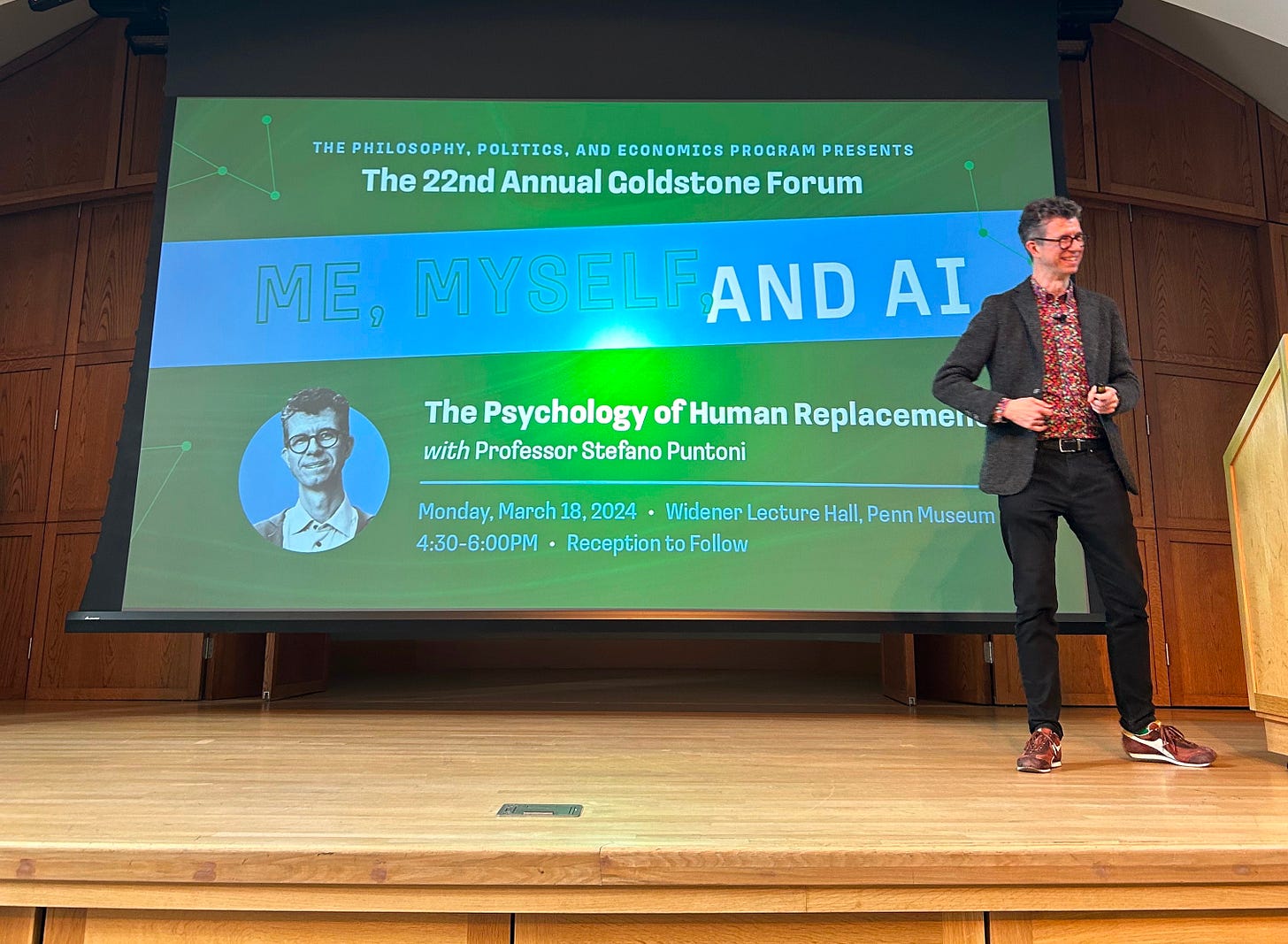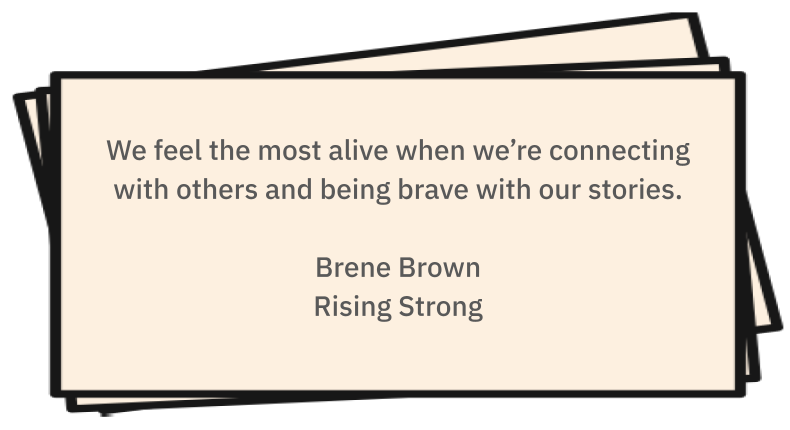Everyone is selling something
I recently wrote how Astrolab started. Here’s the tl;dr.
Back in 2011, I was frustrated with my job as a corporate lawyer. I also taught a course in my law school.
During the summer of that year, I was assigned to teach an unpopular course for the next semester: Directions of Legal Thought, a lowkey prequel to another more dense one named Philosophy of Law.
I needed help on making my young students care about a rare, obscure and abstract topic.
I accepted the class because I really thought that becoming an academic was my calling. Also, I was the youngest person on the roster (27), so I really didn’t have much leverage.
I wrote a post on my blog asking Óscar, a friend that co-ran a small branding agency, for help. Here are my words:
I need your help. You sell and I need to sell. And, you know it well, I don’t know how to do that I thought that I was never going to learn how to sell. I’ve come to understand that everyone is selling something. If you’d like—if you’d prefer—you can use a different word, since selling almost always implies a product. Or a service. What I do, on the other hand, follows other paths and expresses itself in different ways… but at its core, it’s very similar to what you do. To what everyone does.
Fast forward, I think that most of what we’ve done at Astrolab for the past thirteen years goes up the same alley.
What has changed, though, is the angle through which we look at storytelling. Instead of just seeing it as a tool for persuasion, we’ve come to understand its much deeper role in humankind.
That’s what this post is about.
About symbolic communication
Yes, storytelling is a tool that can be used to persuade, to communicate ideas in a clear way, and to accelerate alignment around a vision.
Yet it is also used for human connection, and I think that this is what will make storytelling ever more relevant in this new era of AI.
Last Thursday I shared a table showing how the second most common use of at least one of the leading GenAI tools was content creation and communication assistance, and I predicted that nuance, uniqueness and relationships were going to be the trenches that separated human communication from AI.
One of my sources of inspiration for this belief comes from Stefano Puntoni, a professor at the Wharton School.
Puntoni is at the forefront of understanding AI and it’s role in business, while at at the same time helping us understand human behavior, as he said recently in a talk I attended at the Penn Museum:
I’m a behavioral scientist, trying to understand the impact of algorithms.

In a WSJ article he wrote last year, he shared his own research on how humans seemed to prefer human labor compared to machine labor when identity was on the line.
He and his team distinguished between symbolic consumption, “which is motivated at least in part by the desire to be a particular type of person—related to group membership, personal values, interests, status or style”, and transactional consumption, which is “more practical, instrumental reasons, such as buying a glass container simply to store food”.
Here’s Puntoni:
Human labor is associated with uniqueness, which consumers seek in symbolic consumption, while machines are linked to repetition and standardization (…). This happens because they link human labor to greater perceived uniqueness.
Now, change the word consumption for communication. What do you get?
In life and in business, there are moments for transactional communication (asking for a pizza, sharing facts, showing data), and there are moments for symbolic communication (introducing yourself, building a relationship, trying to inspire others.
The key is to understand when a specific communication moment is transactional, and when is symbolic.
Here’s a general rule: if you’re interacting with a human, that moment has something of symbolic, EVEN when you’re asking for a pizza, or having an argument with someone on X. So be nice and kind.
There are a lot of moments, though, that are much more about symbolic than about transactional communication. Moments where your personal reputation is on the line, and that require you to show up and own your words.
Moments like these:
- talking to your mom
- introducing yourself
- having a team meeting
- making a follow-up sales call
- doing a 1-on-1 performance review
- interviewing someone for a new role
- writing an email to your Second Grader teacher
- discussing strategy with your business partners
During these moments, facts are important, but the meaning of those facts is probably more important. (Btw, here’s a post I wrote that can help you dissect your ideas so that you make sure you include meaning):
- How do things connect to each other?
- Why do those things matter?
- Why now?
In symbolic communication, storytelling is THE or one of the most valuable currencies.
Why? Because stories are about experiences, and experiences are unique.
Why experiences are unique and make us feel alive
Because, hear me out, we’re finite, and this makes them valuable (invaluable?).
Last week I saw Troy (2004) for the first time. During a conversation Brad Pitt Achilles’ says the following to Briseis:
I’ll tell you a secret, something they don’t teach you in your temple. The gods envy us. They envy us because we are mortal. Because any moment might be our last. Everything’s more beautiful because we’re doomed.

These are both terrible and beautiful words.
Think about it. By design, AI is omnipresent and is not linked to a biological body, therefore, is not linked to life or death (except, spoiler alert, Klara).
That’s probably why we vibe when listening to a good story about something or someone you care: stories make us feel alive.

Now, here’s the real challenge: finding stories that you can share.
Stories about
- your fails
- your POV
- your emotions
- the things that surprised you
- your encounters with challenges
- how things were not as you remembered
Those stories are part of your handprints. They’ll help you build sympathy, trust and even credibility.
But you have to spend time and effort registering them.
I’ll end this post with a call to action.
Build a habit of looking for stories
Last week I wrote about the three-step process to master storytelling.
The most difficult of the process is the second: finding, crafting and archiving stories.
You can be both cognitively and emotionally convinced on the power of stories, but this won’t matter if you’re not able to find stories to tell.
I’ve spent thousands of hours thinking and writing about this, and I have to tell you that there’s no easy way out: you need to build the habit of looking for stories.
Our memory is porous, wrote the Argentinean writer Jorge Luis Borges.
Here’s a tool I just came across, by the fellow storytelling professional Matthew Dicks: Homework for Life.
Homework for Life is a storytelling technique that involves journaling a few minutes each day reflecting on daily events and identifying experiences that are Story worthy.
Here are some questions Dicks suggest to help you find stories:
- Did something happen that was unexpected or surprising?
- Did you learn something about yourself or someone else?
- Was there a moment of tension or conflict?
- Did something happen that made you think or feel differently?
- Did you witness or experience something that was particularly memorable or poignant?

Challenge: Start Homework for Life
There’s a high probability that you’re taking off today and tomorrow, and that you’re spending time with loved ones.
Take three minutes today, tomorrow and Saturday before starting your day or before going to bed to ask yourself those questions.
Notice what experiences bubble up to your consciousness.
Take one of those, and give them an outline, a couple of bullet points will do.
And that’s it, you just started Homework for Life!
Let me know how does this go! I’ll do the same, and share my experiences on the comments.
